organizational growth
Embracing Change in Leadership: Navigating the Paradox of Desire and Action

Photo by Ross Findon on Unsplash
The contrast between ‘Who Wants Change?’ and ‘Who Wants to Change?’ presents a profound paradox. This dichotomy captures the essence of leadership challenges and underscores the pivotal role of effective listening in navigating change.
The Paradox of Desire and Action in Change
At the crux of this problem lies human nature’s intrinsic resistance to change, juxtaposed against the desire for improvement and growth. ‘Who Wants Change?’ is a rhetorical question highlighting the universal yearning for progress, innovation, and betterment. This question resonates across the multifamily leadership space, where the constant pursuit of excellence, team member engagement, resident satisfaction, and market competitiveness reign supreme.
However, the transition from desiring change to implementing it is where the challenge intensifies. ‘Who Wants to Change?’ poses a more daunting inquiry, probing the willingness to embrace the discomfort and uncertainty accompanying transformation. It calls for introspection and accountability, urging leaders to step beyond aspirations and venture into tangible action.
The Role of Listening in Leading Change
Effective listening is crucial in bridging the gap between these two questions. In the context of leadership, where diverse perspectives and complex dynamics exist, active listening is paramount to the act of hearing. It involves understanding, empathizing, and assimilating various viewpoints to forge a shared vision of change.
Leaders adept at listening can decipher their teams’ underlying concerns and aspirations. This skill enables them to tailor change initiatives that are strategic and resonate with their organization’s collective ethos. By fostering a culture of open communication, leaders can help lower the vail of change, aligning individual goals with organizational objectives.
Transforming Desire into Action
The transformation from desire to action in the context of change is a journey of strategic planning, persistent effort, and adaptable leadership. It begins with clearly articulating the desired transformation, breaking the grand vision into attainable milestones. This clarity in communication is pivotal, as it aligns the team’s efforts and fosters a sense of shared purpose.
Implementing change also demands resilience and flexibility. Leaders must be prepared to navigate unforeseen challenges and adjust strategies as needed. This adaptive approach ensures the sustainability of change initiatives and reinforces the team’s confidence in their leadership.
The Impact of Listening on Multifamily Leadership
In leadership, where the stakes involve not just properties but the lives and well-being of communities, the impact of effective listening is profound. Leaders who listen can better anticipate market trends, understand tenant needs, and foster a work environment that values innovation and collaboration. Such leadership drives organizational success and contributes to the broader goal of enhancing the quality of life in multifamily communities.
Share this:
Reviving Organizational Pulse: The Risk Imperative

Photo by Cristofer Maximilian on Unsplash
In an age where rapid tech advancements, swift paradigm shifts, and risk-taking define the business landscape, the words of Elon Musk strike an almost haunting chord. “This is how civilizations decline. They quit taking risks. And when they quit taking risks, their arteries harden. Every year, there are more referees and fewer doers. When you’ve had success for too long, you lose the desire to take risks.”
If we distill this sentiment, it cautions against the dangers of complacency and underscores the inherent value of risk-taking in organizational growth. As leaders in the multifamily space, the resonance is palpable. Here’s why.
The absence of risk can spell stagnation. Historical success, while validating, can often blind one to the changing needs and evolving paradigms of the industry. The more we nestle in our comfort zones, banking on tried and tested methods, the more we stand to lose touch with the ever-changing reality of business.
Musk’s mention of “more referees and fewer doers” is particularly compelling. We are often mired in layers of bureaucracy of our own making. While governance and oversight are crucial, an overemphasis can stifle innovation. If every novel idea must pass through an exhaustive series of approvals, the spirit of entrepreneurship within the organization diminishes. Those passionate “doers” find their energies curbed, their innovations quelled. We must think about freedom within a framework to ensure we don’t stall the organization.
Human-centric leadership thrives on understanding people’s aspirations, challenges, and needs. It’s about intuiting future trends, predicting shifts in consumer behavior, and acting on these insights with agility. This requires the courage to take risks and the vision to see where these risks could lead. We must have the freedom to think and, more importantly, act. We must be open to change.
Yet, to drive this change, leaders must foster a culture that celebrates risk. This doesn’t mean recklessness but rather a calculated approach to innovation, where the potential for growth and the impact on the human experience are at the forefront of decision-making. Organizations should be sanctuaries for creative thought, where the fear of failure doesn’t overshadow the thrill of the possible. In a former life, we were governed by a value that fits this thought – Take Educated Risks.
While stability and consistency have their merits, the true advancement of any organization or leader lies in embracing risk. In that risk lies the promise of growth and novel ways of doing things. As multifamily leaders, let us not be content with past glories. Instead, let’s seize the future, one risk at a time.
Share this:
Unlocking Deeper Insights: The ‘And Then What?’ Strategy for Multifamily Leaders

Photo by Towfiqu barbhuiya on Unsplash
As a business leader, there is a need for thoughtful decision-making. Leaders must avoid surface-level thinking and foster a culture of deep understanding and critical examination. Easy to say, very hard to develop the discipline. One transformative question that can alter how professionals in this space approach problems is: “And then what?” This method, inspired by Shane Parrish’s work, advocates for pushing beyond initial conclusions and diving deeper into the ramifications of our decisions.
At face value, multifamily leadership might see a solution as the endpoint. You identify a challenge, put a pure definition to the problem, brainstorm, find a solution, and implement it. However, by stopping at the first solution, leaders might miss out on unforeseen consequences or even better alternatives. That’s where the “And then what?” strategy comes into play.
When you pose the question, “And then what?” after arriving at a potential solution, you compel yourself and your team to forecast beyond the immediate; for multifamily leaders, this can mean the difference between a successful strategy and one with unintended negative impacts. For example, if considering a new technology solution to streamline operations, it’s tempting to adopt it based on initial benefits. However, asking “And then what?” might reveal potential integration issues with existing systems or perhaps a need for significant team training, impacting productivity in the short term.
This questioning strategy also promotes human-centric leadership, which I consider key in multifamily. By continually asking, “And then what?” leaders are pushed to consider the human consequences of their decisions. Will the new strategy alienate certain team members? Could it unintentionally create more work or stress for particular roles?
Furthermore, embracing the “And then what?” approach fosters an environment of continuous learning and innovation. It challenges conventional wisdom, compelling teams to explore contrarian ideas or new technologies that might offer more effective or efficient solutions.
The beauty of this approach is its simplicity. It doesn’t require extensive training or the adoption of new technologies. It’s a mindset, a commitment to thorough examination and forward-thinking. It’s an invaluable tool for multifamily leaders to tease out human potential.
Share this:
The Power of Contribution: How to Boost Institutional Performance

Photo by Kolleen Gladden on Unsplash
When the world changes, serious multifamily types often ask: “What can I contribute that will significantly affect the performance and the results of the property management company I serve?” To answer this question, one must dive deep into what contribution truly means and how it can be harnessed for growth.
Understanding the Power of Contribution
Contribution isn’t simply about completing tasks or ticking off items on a to-do list. Contributing means bringing something unique and valuable to the table, which can propel a company forward. Every individual has skills, experiences, and perspectives that, when channeled correctly, can provide immense value to an organization.
Identifying Your Unique Offering
The first step in harnessing your contribution potential is recognizing what you excel at. What are your unique skills? What perspectives or experiences do you bring to the table that others might not? By identifying and understanding these, you can see where your input might be most beneficial.
For instance, if you’re a natural problem-solver, your contribution might lie in streamlining processes or developing innovative solutions. On the other hand, if you excel in interpersonal communication, your role might be pivotal in team coordination and customer relations.
Building On Organizational Growth Strategies
Aligning your unique strengths with the company’s growth strategies is key. By understanding the company’s direction, you can align your contributions accordingly. Whether by offering insights, spearheading projects, or simply collaborating effectively with peers, your impact can be monumental.
Prioritizing Effective Team Impact
It’s important to remember that no one operates in isolation. Your contribution, no matter how significant, will always be a part of a larger team effort. By collaborating, supporting, and uplifting your colleagues, you enhance your contribution and the collective performance.
Consistency in Contribution
No matter how grand, a one-time effort might not have the lasting impact you desire. For a meaningful effect on institutional performance, consistency in contribution is key. This doesn’t mean exhausting oneself; it’s about being consistently present, engaged, and proactive in offering your skills and expertise.
To Sum
Every individual has the potential to significantly influence the performance and results of the company they serve. This potential can be realized by understanding the essence of contribution, identifying one’s unique offerings, and aligning with organizational goals.
So, next time you find yourself contemplating how to make a difference, remember the power lies not just in what you do but in understanding and harnessing the true essence of your unique contribution.
Share this:
Cultivating Success: Parallels Between Gardening and Team Development in the Multifamily Space

As the vibrant essence of spring unfolds, its presence is undeniable. Flourishing flowers, budding trees, and a fine dust of pollen paint the landscape in vivid colors. Reflecting on my past experience leading ‘The Lawn Ranger,’ a landscape company, I am reminded of the dynamic transformation spring brings, mirroring rapid developments and evolutions. So many parallels for multifamily.
This season, a time of rejuvenation, resonates deeply with gardening enthusiasts. They engage in a symphony of activities: selecting plants, enriching the soil, and meticulously assessing the needs of each botanical inhabitant. The fragrance of freshly turned soil lingers in the air, marking the gardener’s act of planting seeds—a gesture of faith in nature’s power to nurture and grow.
Gardening is an ongoing journey of nurturing and care. Gardeners engage in a meticulous process of watering, weeding, and pest control. The satisfaction derived from extracting a stubborn weed, especially those with deep roots like dandelions, is incomparable. A weed might temporarily disappear if only its surface part is removed, but without extracting the root, it soon re-emerges, mirroring short-lived solutions to deeper issues.
Drawing a parallel to the multifamily industry, our role is akin to that of gardeners nurturing their crops. In this sector, the challenges of talent competition, rapid turnover of new hires, and retaining current team members are predominant. The pandemic intensified these issues, though they predate it. High turnover has been a persistent challenge, with the multifamily turnover rate standing at 33%, notably higher than the national average of 22%.
Effective team development begins even before a job is posted. Offering competitive salaries aligned with current market standards rather than past benchmarks is fundamental. Adequate compensation is a reflection of recognizing an individual’s worth. The journey of a new hire is meticulously planned, from initial communication to a structured onboarding process, facilitating peer connections, and mapping out the initial weeks with training, support, and motivation. These steps are crucial in guiding new hires through the complexities of their new roles.
The initial period is critical as new hires assess their experiences against the expectations set prior to joining. It’s during this phase that we risk losing them if there’s a disconnect between our proclaimed values and daily practices. When trust is broken, akin to the persistent weeds, superficial solutions are insufficient.
Addressing the challenges of talent acquisition and retention requires a fundamental approach. Key elements include competitive remuneration, fostering meaningful connections, committing to a purpose beyond self-interest, and ensuring that the cultural experiences within the organization align with its brand promises. Like gardeners who adapt to the evolving needs of their plants, we in the multifamily space must continuously evolve our strategies to nurture and retain our teams effectively.

